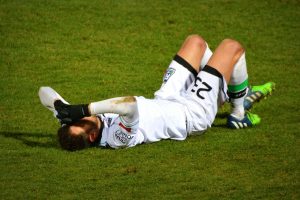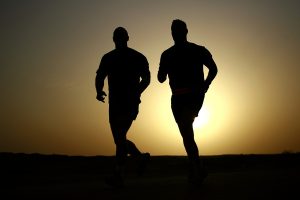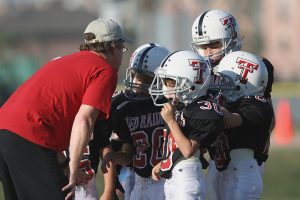Sports and Chiropractic
My patients in Caledonia often come to me to help them with their sports injuries or to help them keep playing the sports that they love. These are some of their reasons and my take on how a Chiropractor can help a person in the sports world:
Patients say that they use chiropractors to help recover from sport injuries
Chiropractic is excellent at helping a patient recover well and heal from a sports injury. Making sure your body is properly aligned from the ankle all the way to the skull will put your body in the best shape to heal.

Patients greatly appreciate Chiropractic in training and preparing for tournaments, competitions, or races.
Chiropractic can greatly help a competitor become in tune with their body’s needs through the demands of training and competing. Often times the Chiropractor can highlight which areas are having difficulty and need to be rested or addressed properly in training in order to avoid sports injuries! Having your spine and nerve system at optimum health through Chiropractic can also help the competitor gain the competitive edge on race day! Taking the body’s performance from 95 to 100%.
One of the biggest hindrances to performance is injury
Injuries often feel like they come out of nowhere. In reality, these injuries often take time to build up before “getting you”. In my Chiropractic practice and in my own personal life I have seen how much an injury can set back training plans, goals, and performances. Many of our athletic patients use Chiropractic throughout their training routine to keep an eye on the body and to encourage it to move and function well. It also helps them to identify regions which may be building up tension leading towards a potential injury.
Patients appreciate advice from Chiropractors on their training as well!
Dr. Callum Peever and Dr. Ken Peever have been competing in many sports throughout their lives. They have also helped countless athletes train, compete, and recover. Because of this, these Chiropractors have lots of advice to help you reach your optimum health. Sometimes the advice is to push harder, sometimes to avoid overtraining, and sometimes to look into new avenues of sports health and performance too!
As a Chiropractor in Caledonia, I am very happy to help many people achieve their goals. It is especially exciting to help athletes train towards a goal and to accomplish amazing athletic feats! If you need a Chiropractor in Caledonia, contact us!
Sincerely,
Dr. Callum Peever
Heart Rate Variability as an Objective Outcome Measure for Subluxation Based Chiropractic Care for Athletes
I have been enjoying running lately using strava and tracking my runs and efforts with my Suunto watch. I love watching the measures I generate through the runs, and gravitate to the performance level and recovery time. These measures are calculated using heart rate variability along with speeds, distances, and times. Heart rate variability is actually a measure of your autonomic nervous system. As a Chiropractor, I love everything related to the nervous system (as a Chiropractor’s main goal is to remove interference to the nervous system by contacting the spine) which is why I get so excited being able to apply these measures in such a practical way. This article caught my attention because it highlights the Chiropractic desire to help patients be better through positively impacting the nervous system. The article is just a way to grow curiosity for the research community, which I hope it does for you too!
Below are excerpts and my comments from a 2018 commentary by Matthew Hartenburg, D.C. regarding heart rate variability as an outcome measure for chiropractic care of athletes. A link to the article can be found below.
“The chiropractic profession has a long history of working with athletes in professional and non-professional sports. In the 1920’s, members of the New York Yankees were documented to have been under the care of a chiropractor. In 1980 the United States had its first D.C. appointed to its Olympic team. More recently, in the 2014-2015 season it was documented that all 32 teams in the NFL utilize chiropractic and 27 out of 30 Major League Baseball franchises have an official team Chiropractor.1″
Chiropractors can be a secret weapon in helping an athlete recover, train, and perform at their best. They are becoming less and less of a secret however! The author does comment on how there is no direct evidence to connect subluxation to athletic performance. He does however point to how there is evidence to investigate further on the research community’s end.
“The traditional role of chiropractic in sports has primarily been an alternative form of musculoskeletal rehabilitation and injury prevention.1,2 This commentary will explore the hypothesis that subluxation centered chiropractic can have an effect on the function of the autonomic nervous system thus assisting in the athlete’s recovery during periodized training cycles or a competitive season.”
There are many forms of how to apply Chiropractic. You can think of it as their being many different fighting arts (karate, kung fu, etc.). All are forms of fighting but they can look and feel different as well as have different purposes. Subluxation centered chiropractic care aims to remove interference on the nervous system, which is what the author is referring to. I would argue that it is the traditional and purest form of Chiropractic when going back to the creation of the profession in 1895. The hypothesis that chiropractic care can impact the autonomic function in a positive way for athletes is what this author is highlighting in order to encourage further discussion and research and use in this application of Chiropractic. While the researches are curious about how you are getting faster and stronger while no overtraining, don’t stop what is helping! Chiropractic could be one of those things for you!
“Specific Adaptation to Imposed Demand and Performance””Overload and Overtraining: Failure to adapt””Hans Selye’s General adaptation response or general adaptation syndrome (G.A.S).3,7″
The author summarizes aspects of the above exercise physiological principles regarding training and overtraining but comments on how his main attempt is “to elucidate the role of the autonomic nervous system to recovery and performance and it’s relevance to chiropractors.”
“If the athlete has been overloaded during the training period and has not allowed for adequate recovery they may find themselves in the exhaustion phase which may ultimately result in overtraining syndrome (OTS).”
“They further state that “successful training must involve overload but also must avoid the combination of excessive overload with inadequate recovery.”8 Improving sports performance is necessarily the proper balance of training and recovery.”
“Assessing Recovery Status and Autonomic Function
The advances in understanding of the nervous system’s role in training and recovery has led to an increase in demand for means to objectively assess the athlete’s physiological state. To date, it appears that heart rate variability (HRV) is the most accessible minimally invasive means available for evaluating an athlete’s response to training. HRV is a strong indicator of physiological changes in response to training programs, prescribing exercise intensity on an individualized basis, and has been utilized to assess overtraining which is often times predominated by sympathetic activity.15″“Heart Rate Variability and Chiropractic
Several authors have begun to make a case for assessing the stress response and utilizing heart rate variability as objective outcome measures to chiropractic care. Hardy and Pollard stated that sufficient evidence exists to consider stress, and its mechanism, in the generation of non musculoskeletal disorders which Chiropractors have seen in practice. Despite the fact that little investigation has been done by the chiropractic profession to study the mechanisms, substantial framework exists for such a model.20 a substantial body of evidence exists which rationalizes investigating effects related to the autonomic stress response in athletes as well.”
The author does list 5 research papers doing this, we always want to see more!
“Discussion
Improvements in sports performance are a result of proper periodized overload training balanced with adequate recovery. Current popular interest in the fitness community as well as contemporary exercise science is becoming increasingly geared towards understanding the role of the central and autonomic nervous system in recovery and performance.”
The author comments on the role of the nervous system in athletic training is a popular topic and points to some articles such as:
Mychal, Anthony. “12 Tips to Tune the Nervous System.” T NATION. N.p., 16 Nov. 2011. Web. 05 Apr. 2017.
10. Baggett, Kelly . “Recovery and the Nervous System.” Mind And Muscle. N.p., 19 Jan. 2016. Web. 05 Apr. 2017.
11. Johal, Reggie. “How a Serious Athlete Should Handle Fatigue.” Breaking Muscle. N.p., n.d. Web. 05 Apr. 2017.
Training Peaks shares on why to use HRV as an athlete (specifically in the off season)
Another Heart Rate Variability blog with respect to athletes and sports caught my attention at the Training Peaks website. Here is a link to their article how they describe how measuring HRV you can detect early signs of illness & take action, you can watch your baseline rise with purely aerobic training, test the impact of lifestyle changes independent of training (including stress management, diet, and sleep), and you can reset your baseline ready for the new season. Why You Should Measure HRV Through the Off-Season
This Training Peaks website is great for athletes who enjoy analyzing their training and are training for a specific event in the future. The goal is to show up for that event at your best possible shape. They analyze fitness, form, and fatigue and give you a score to keep an eye on.
You can learn a lot about the metrics used in this type of sports training analysis through books by Joe Friel. I specifically enjoyed the detail in The Triathlete’s Training Bible, 4th Ed.
I have personally found improvements in my sports performance through the information gained from Joe Friel and I feel that you can as well. – Dr. Callum Peever


